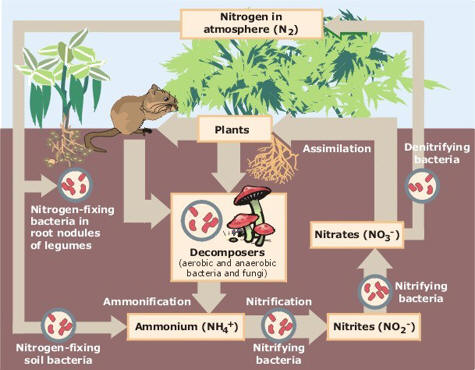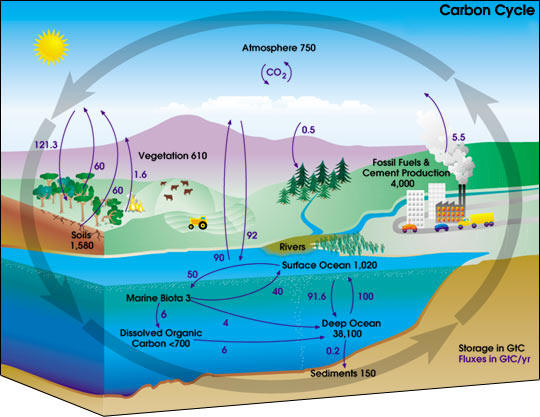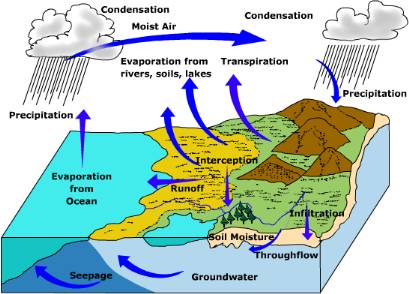2.9: Review and Additional Resources
- Page ID
- 15854

Assess your learning. Start with the "Important Terms and Concepts" to ensure you know the terminology related to the topic of the chapter and concepts discussed. Then, test your overall understanding by taking the "Self-assessment quiz".
-
- System
- a collection of interacting objects
-
- Open system
- allow energy and mass to pass across the system boundary.
-
- Closed System
- allows energy but not mass across its system boundary
-
- Isolated system
- allows neither mass or energy to pass across the system boundary
-
- Lithosphere
- the solid Earth
-
- Hydrosphere
- "water sphere"
-
- Biosphere
- all living organisms
-
- Atmosphere
- the gaseous envelope surrounding the Earth
-
- Positive feedback
- a process that aims to amplify or inhibit an action (moves towards extremes)
-
- Negative feedback
- self-regulatory system aiming to stabilize or establish equilibrium
-
- Steady-state equilibrium
- constant flow. constant over time
-
- Dynamic equilibrium
- a state of balance between continuing processes
-
- Exogenic process
- processes driven by exogenic forces that primarily derive their energy from solar radiation.
-
- Endogenic process
- processes that get their energy from endogenic forces originating deep within the Earth.
-
- Nitrogen Cycle
-

-
- Oxygen Cycle
-

-
- Carbon Cycle
-

-
- Hydrologic Cycle
-

the movement of water through its various stores within the Earth system
- The Earth system is considered
- an open system
- a closed system
- an isolated system
- None of the above
- Which of the following was pulled inward to create the Earth's core during the later accretion phase?
- Magnesium
- Silicon
- Aluminum
- Iron
- A change in a system property that encourages further system change is called
- a positive feedback
- a negative feedback
- a threshold
- an equilibrium trigger
- Earth's shape is described as
- a true sphere.
- an oblate ellipsoid.
- a disk.
- none of the above.
- The shortest distance between two points on a sphere is
- an arc of a great circle.
- an arc of a small circle.
- an oblate ellipsoid.
- a straight line.
- Which of the following would act to keep a system in a state of equilibrium?
- a positive feedback
- a negative feedback
- a threshold
- an equilibrium trigger
- The equatorial bulge is due to
- the gravitation attraction of the Moon.
- the gravitation attraction of the Sun.
- the centrifugal force of Earth rotation
- none of the above.
- The hydrosphere is an example of
- an isolated system
- an open system
- a closed system
- none of the above
- Though the atmosphere's temperature has varied throughout geologic history, much of the time it has been considered to be
- in a state of dynamic equilibrium
- in steady-state equilibrium
- in a non-equilibrium state
- in a geo-equilibrium state
- Earthquakes are generated by ______ sources of energy.
- endogenic
- exogenic
- both endogenic and exogenic
- none of the above
- Answer
-
- B
- D
- A
- B
- A
- B
- C
- B
- A
- A
Additional Resources
Use these resources to further explore the world of geography
Focus on The Physical Environment: "Science on a Sphere: Earth System Overview" NOAA
Connections: "Dimming the Sun" Nova - air pollution's effect on solar radiation and global warming. Support site and program transcript. (2006)
Physical Geography Today: Real Time Geomagnetism monitoring - USGS
Multimedia
![]() "The Precious Envelope" (Annenberg Media) The World of Chemistry video series "The Earth's atmosphere is examined through theories of chemical evolution; ozone depletion and the greenhouse effect are explained. (Material is somewhat dated but still useful.) Go to the The World of Chemistry site and scroll to "The Precious Envelope". One-time, free registration may be required to view film.
"The Precious Envelope" (Annenberg Media) The World of Chemistry video series "The Earth's atmosphere is examined through theories of chemical evolution; ozone depletion and the greenhouse effect are explained. (Material is somewhat dated but still useful.) Go to the The World of Chemistry site and scroll to "The Precious Envelope". One-time, free registration may be required to view film.
![]() "Is Global Warming Nurturing Parasites?" All Things Considered June 20, 2002.
"Is Global Warming Nurturing Parasites?" All Things Considered June 20, 2002.
![]() Earth Revolution NASA JPL
Earth Revolution NASA JPL


